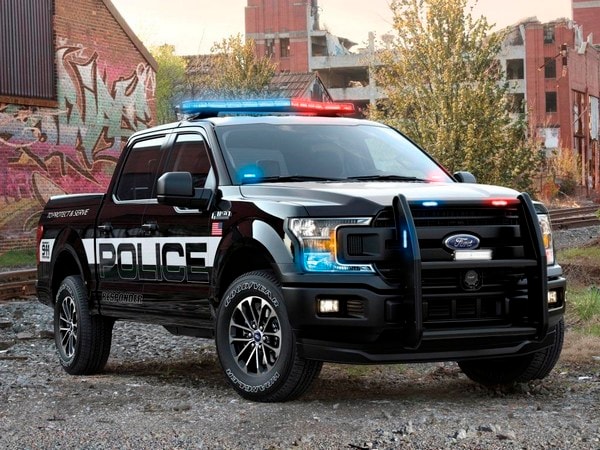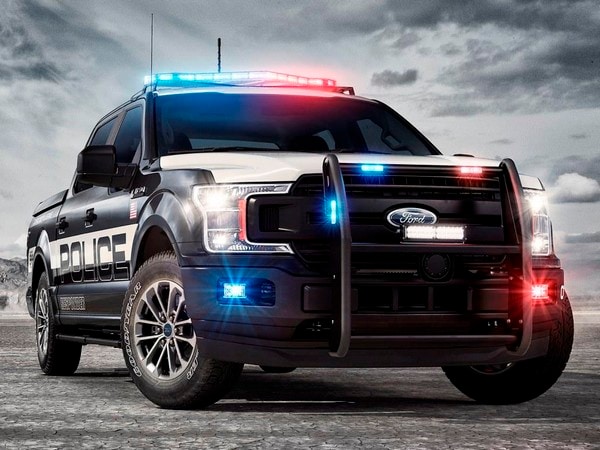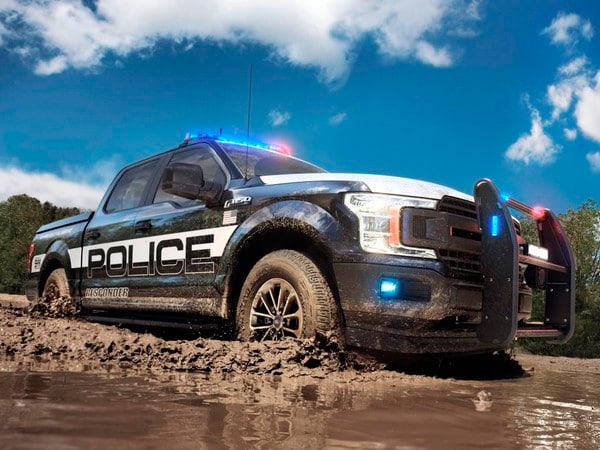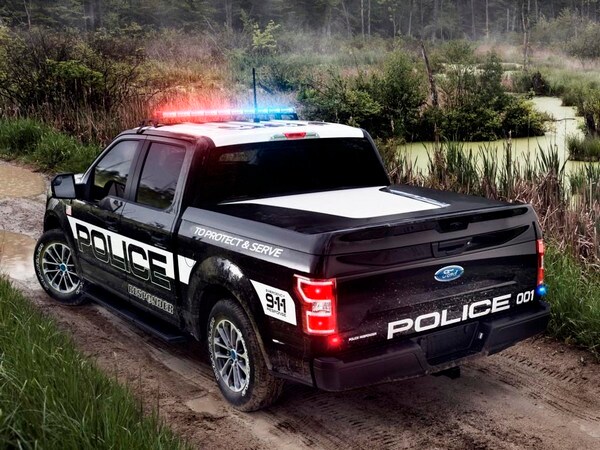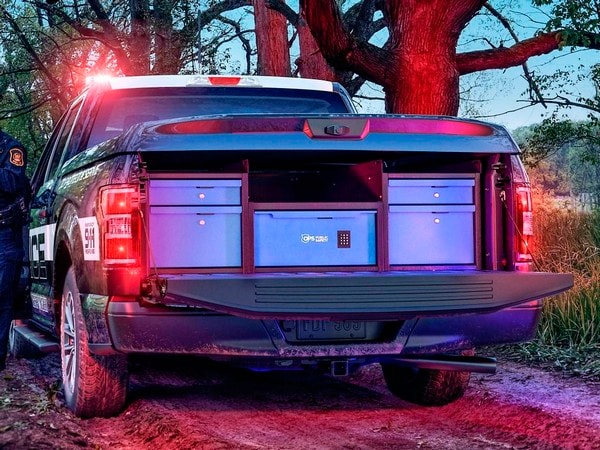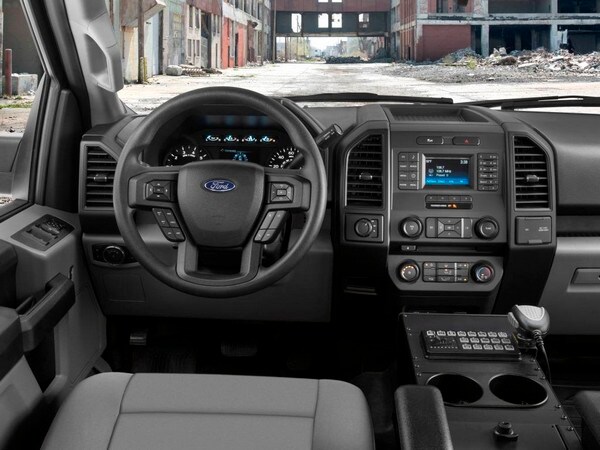For almost two decades, police vehicles—cop cars, if you will—were easy to distinguish in your rearview mirror, usually well before those red and blue lights began to flash. That ended in 2011, when Ford discontinued the Crown Victoria sedan, the long-time police patrol gold standard. But the waning years of the Crown Vic saw other players upstaging the veteran. The Dodge Charger and Chevy Tahoe to name two of the most successful. It was clear to Ford execs that something new was needed if it was to continue its dominance of the police market.
When the Crown Vic cruised into police history, Ford stayed in the game with police versions of the Explorer SUV, Taurus sedan, and Fusion hybrid, as well as Special Service versions of the Transit Van, Expedition, and F-150.
Special Service is a subtle distinction. It describes a vehicle employed by public agencies, one that might even wear police department livery, but isn’t pursuit-rated. Generally speaking, pursuit ratings are awarded at annual tests conducted by the Michigan State Police and the Los Angeles County Sheriff’s Department. Ford is confident the F-150 will pass muster when it’s up for the rating this fall. Carmakers in the police vehicle business covet the ratings, which are important to sales success in this arena.
Modest market
The police market isn’t huge—including special service vehicles, it’s around 70,000 units per year, to state and local agencies. Ford sold 43,000 last year. But like NASCAR, it’s important to carmakers because it validates their wares in a highly visible way.
It’s worth noting that the difference between racing and patrol duty is that Ford’s police units differ only slightly from their showroom counterparts, whereas the cars contending on NASCAR tracks have no relationship whatsoever to regular production vehicles. Police work is arguably the ultimate reality show.
Ford’s latest addition to its pursuit fleet—formally, the F-150 Police Responder—is based on the F-150 FX4 crew cab off-roader, with 4-wheel drive and a 3.5-liter EcoBoost V-6 rated for 375 horsepower, 470 pound-feet of torque, 10-speed automatic transmission, 2000-pound payload, and 7000-pound towing capacity. The FX-4 also includes a 2-speed transfer case, underbody skid plates, and off-road tires.
Special equipment includes a 240-amp alternator, to support the typical electronics load in contemporary police work; enhanced braking (upgraded calipers, pads with heavy duty friction material); enhanced cooling; a heavier front antiroll bar; a column shifter, freeing center console space; vinyl floorcovering for easy cleanup; front seats with heavy duty cloth upholstery; a police-calibrated speedometer; and meters tracking total engine hours as well as time spent idling.
An interesting security touch—common to all Ford’s police units—can be found in the front seatbacks, whose fabric covers a layer of synthetic armor that Ford calls “anti-stab material.” After all, you never know what the perps might bring on board. Speaking of perps, the rear seat of the F-150 Police Responder is capable of holding three of them, comfortably, although it’s not clear whether this is true if all three are wearing handcuffs.
Also: Get your first look at the new and redesigned cars of 2018
Pursuit with an asterisk
Contrary to what the designation might suggest, pursuit rated has to do with all-around durability for rugged police duty, rather than speed. It’s true that some police cars can deliver high performance, but not the F-150, which has a top speed of 100 mph—5 mph less than the regular production truck.
But Ford doesn’t see the F-150 Police Responder getting into high-speed chases. The target is border patrol operations, fish and game organizations, U.S. Forest Service, the Federal Bureau of Land Management, tribal police, etc. Ford currently claims a 60 percent share of the police vehicle market, and a 70 percent slice of pursuit-rated cop rides.
Will Fiat Chrysler Automobiles (FCA) respond by upgrading its Ram Special Service offering to full pursuit status? A Hellcat-powered Ram would probably be capable of more than 100 mph. But for the foreseeable future, when Ford’s cop truck begins reaching departments next spring, it will be the only vehicle of its kind in police business. And as such, it will be easy to pick out of the rearview mirror clutter. Easier to recognize, even, than the old Crown Vic.

